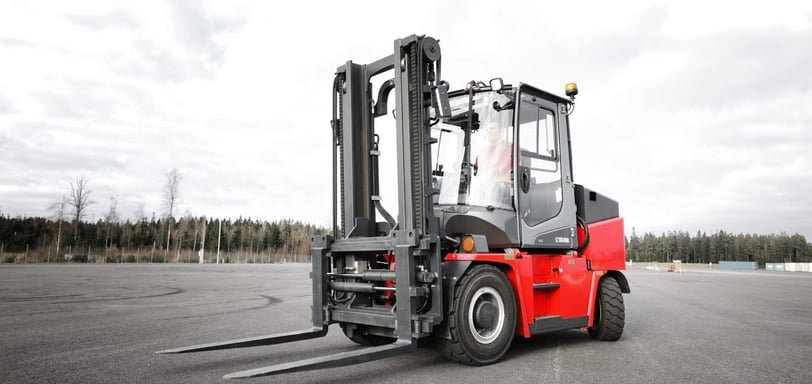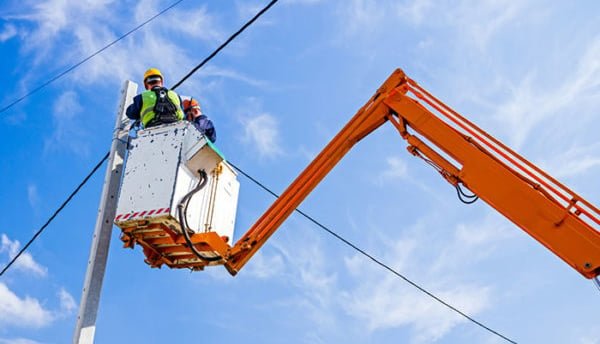Learn Ontario’s OHSA and CSA requirements for lift truck (forklift) safety, operator training, and compliance. Stay safe and certified with Achieve Safety.
What Is a Lift Truck and Why Safety Training Matters
Lift trucks, or forklifts, are powerful tools used across Ontario industries—but they’re also among the top causes of workplace injuries. This guide explains what lift trucks are, outlines OHSA regulations, CSA training standards, and shows how proper certification protects both workers and employers under Ontario law.
A Small Mistake, a Big Consequence
A single wrong turn with a lift truck can cost more than just damaged goods—it can cost lives.
Across Ontario, forklift-related accidents continue to rank among the most common causes of workplace injuries. Yet nearly every one of them is preventable.
Whether you’re managing a warehouse, construction site, or retail operation, understanding how lift trucks are regulated under Ontario’s Occupational Health and Safety Act (OHSA) and CSA Standard B335-15 is key to compliance and to keeping your team safe.
What Is a Lift Truck?
A lift truck, commonly called a forklift, is a powered industrial vehicle designed to lift, lower, and transport materials over short distances.
Lift trucks are found in nearly every industry, manufacturing, warehousing, construction, and retail and typically use a hydraulic lifting mechanism and two front forks to move palletized loads efficiently.
Because they’re used daily in high-risk environments, Ontario law treats them as safety-sensitive equipment, requiring both operator training and strict adherence to regulations governing their use.
Ontario’s Lift Truck Safety Legislation
Ontario’s framework for safe lift truck operation is built around the Occupational Health and Safety Act (OHSA) and its supporting regulations.
Each component sets specific responsibilities for employers, supervisors, and workers.
1. Occupational Health and Safety Act (OHSA)
The OHSA defines the general duties of employers and supervisors to protect workers from hazards and ensure equipment is maintained and operated safely.
2. Regulation 851 – Industrial Establishments
This regulation governs most workplaces using lift trucks.
Key sections include:
-
Section 45: Safe lifting, storage, and handling of materials.
-
Section 51: Design, operation, and maintenance standards for lift trucks, including load capacity, inspection, and repairs.
3. Regulation 213/91 – Construction Projects
For construction environments, Section 37 outlines material handling standards and safe lifting procedures specific to job sites.
Together, these laws form the foundation of Ontario’s lift truck compliance system, ensuring consistent safety practices across all industries.
Lift Truck Operator Training Requirements in Ontario
Under Ontario law, anyone who operates a lift truck must receive adequate, competency-based training before using the equipment.
The training requirements are guided by both the Occupational Health and Safety Act (OHSA) and the Canadian Standards Association (CSA) Standard B335-15 – Industrial Lift Trucks.
1. Basic Training
Covers the fundamentals every operator must know:
-
Types and classifications of lift trucks
-
Pre-use inspection procedures
-
Safe operating and load-handling techniques
-
Refueling, recharging, and maintenance practices
-
Workplace hazard awareness and emergency protocols
This foundational level ensures every operator understands general safety responsibilities before handling any lift truck.
2. Specific Training
No two workplaces are alike.
Specific training must address:
-
The exact make and model of lift truck used
-
The layout and conditions of the worksite
-
Unique hazards such as pedestrian traffic, uneven surfaces, or tight aisles
This ensures operators can safely maneuver within their specific environment.
3. Refresher or Recertification Training
Even experienced operators need ongoing evaluation.
Refresher training is required when:
-
Equipment or workplace conditions change
-
A new type of lift truck is introduced
-
An operator has been involved in an incident or near miss
-
Performance assessments identify unsafe practices
Regular retraining reinforces best practices and keeps workers current with evolving standards.
Employer Responsibilities
Employers have a legal duty to ensure lift truck operations comply with both OHSA and CSA B335-15.
This includes:
-
Providing certified and documented operator training
-
Maintaining inspection and maintenance records
-
Conducting hazard assessments
-
Ensuring lift trucks meet design and capacity specifications
Failure to meet these duties can lead to Ministry of Labour penalties, WSIB claims, and serious workplace injuries.
Trusted Resources for Lift Truck Safety
Employers and workers can access official guidance through:
-
Ministry of Labour, Immigration, Training and Skills Development (MLITSD) – Safe Operation and Maintenance of Powered Lift Trucks
-
Canadian Standards Association (CSA Group) – CSA B335-15 Standards Portal
-
Canadian Centre for Occupational Health and Safety (CCOHS) – Forklift Operator Safety
These resources provide detailed regulatory, technical, and best-practice information to help maintain safe lift truck programs.
Stay Certified with Achieve Safety
Proper training saves lives—and compliance protects your business.
At Achieve Safety, we deliver CSA-compliant Lift Truck Operator Training designed specifically for Ontario workplaces.
Our certified trainers ensure your team meets OHSA, Regulation 851, and CSA B335-15 standards through hands-on instruction and real-world assessments.
👉 Book your ForkLift Truck Safety & Certification Training and keep your workplace safe, compliant, and confident behind the wheel.
FAQs – Lift Truck Safety & Training in Ontario
Q1. Who is legally allowed to operate a lift truck in Ontario?
Only workers who have completed approved lift truck operator training and demonstrated competency are permitted to operate lift trucks.
Training must meet the requirements of the Occupational Health and Safety Act (OHSA) and the CSA Standard B335-15 – Industrial Lift Trucks.
Q2. What does the CSA B335-15 standard require for forklift training?
The CSA B335-15 standard outlines three training stages:
-
Basic training on equipment types and safe operation
-
Specific training for the actual lift truck and workplace hazards
-
Refresher training to maintain competency and address performance issues
Employers must document each stage to prove compliance.
Q3. How often should lift truck operators be retrained or recertified?
Refresher training should occur when:
-
New equipment or conditions are introduced
-
An operator is involved in an incident or near miss
-
Unsafe practices are observed
-
A significant time has passed since initial certification
Many Ontario workplaces conduct refresher training every three years or sooner.
Q4. What are the key OHSA regulations governing lift truck safety?
Lift truck safety is covered under:
-
OHSA – Employer and supervisor duties for safe operation
-
Regulation 851 (Industrial Establishments) – Sections 45 & 51 for material handling and design
-
Regulation 213/91 (Construction Projects) – Section 37 for lifting and storage procedures
Employers must comply with all relevant sections depending on their industry.
Q5. What are common hazards associated with lift truck operations?
Typical hazards include overturning, falling loads, pedestrian collisions, poor visibility, and improper maintenance.
Regular inspections, safe speed limits, and operator awareness training significantly reduce these risks.
Q6. What are the employer’s responsibilities under Ontario law?
Employers must ensure all lift truck operators:
-
Are trained and competent
-
Have access to safe, well-maintained equipment
-
Receive refresher training when required
-
Follow written operating procedures based on risk assessment
Failure to meet these duties can result in Ministry of Labour (MLITSD) penalties or WSIB liability.
How can Achieve Safety help Ontario businesses stay compliant?
Achieve Safety provides CSA-compliant Lift Truck Operator Training in Ontario that meets OHSA and regulatory standards.
Our trainers deliver practical instruction, certification, and compliance audits to help businesses maintain safe, legal, and efficient material-handling operations.






